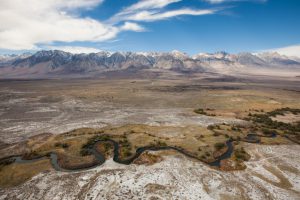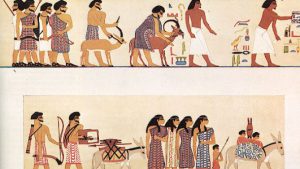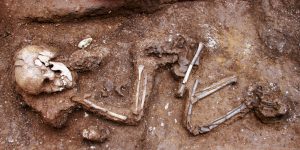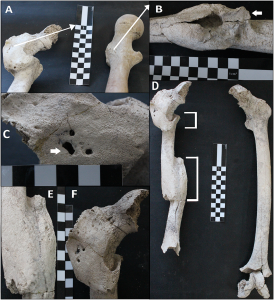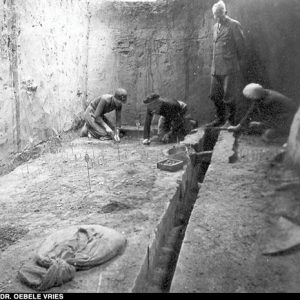In 1974, near the Chinese city of Xi’an in the Shaanxi Province, several local villagers made a tremendous archaeological discovery while digging a well: the Terracotta Army. These clay-based figures, standing in battle formations of thousands in three pits, are the lasting reminders of an ancient civilization more than two millennia old. Every warrior, life-size and sporting unique and distinct facial characteristics, was built to serve the notorious first emperor of China, Qin Xi Huang, in the afterlife. The Terracotta soldiers are organized into various militarized units—foot soldiers, archers, chariot battalions, and armored units.
The Terracotta Army is extremely important to modern archaeology for its insights into the ancient Chinese society of the Qin Dynasty. Much can be learned about the level of technological advancement and the infamous military of Qin Dynasty by studying the distinctive and notable formations of the warriors as well as the weapons and tools found alongside them.
The pits containing the Army provide myriad information regarding the military tactics and formations of units employed by Emperor Qin Xi Huang during his reign.

A chariot battalion from the Terracotta Army pits.
The presence of an agile and maneuverable vanguard containing chariots, infantry, and the cavalry preceding the main echelon of troops pointed to the idea that military strategists of the past were very much aware of the capricious conditions of the battlefield and relied on mobile units to quickly adapt. Furthermore, the diverse weaponry found with the figures allowed archaeologists to infer that each unit, armed with multiple weapons, evolved to play diverse support roles when necessary, filling in the weak and vulnerable spots of the army during ambushes or sieges.
The bronze weapons found with the Terracotta Army also resolved the quandary of whether or not the bronzesmiths of the time mass-produced or individually crafted weapons used by the army. Due to the nature of the size of the massive army and the uniformity of the weapons, it was assumed by many archaeologists that ancient China employed some form of an assembly line.

Arrowheads recovered from Terracotta Army pits.
However, with the help of an X-ray fluoresce spectrometer, archaeologists measured the chemical compositions of some tens of thousands of arrowheads collected from the pits, coming to the conclusion that weapons of the Qin Dynasty were created in multiple workshops individually and debunking the idea that Qin bronzesmiths employed mass-producing assembly lines.
By studying artifacts gathered from the Terracotta Army, modern archaeologists learned much regarding the military and the level of technological advancements of an ancient Chinese society. Through the careful study and the understanding of the Terracotta Army formations and the use of modern-day X-ray fluoresce spectrum imagery, archaeologists gained insights into the military tactics and production methods employed by ancient China under Emperor Qin Xi Huang..
Further Readings:
https://www.travelchinaguide.com/cityguides/xian/terracotta/strategy.htm
Sources:
Jarus, Owen. “Terracotta Warriors: An Army for the Afterlife,” Live Science, November 28, 2016.
“Military Formation of Terracotta Army.” Travel China Guide. https://www.travelchinaguide.com/attraction/shaanxi/xian/terra_cotta_army/strategy_1.htm.
Pinkowski, Jennifer. “Chinese terra cotta warriors had real, and very carefully made, weapons,” The Washington Post, November 26, 2012.



